Low-Carb Bread Secrets Revealed With 21 Burning Questions:

Low-carb bread was the one thing I missed the most when I first started my low-carb journey. The thought of giving up bread—whether it was a warm slice slathered with butter or a hearty sandwich—felt like a major sacrifice. But as I embraced the low-carb lifestyle, I soon realized that bread didn’t have to be off the menu forever. I became passionate about experimenting with low-carb bread recipes that could satisfy my cravings while keeping me on track. In this blog, I’m answering 21 burning questions about low-carb bread, so you can enjoy all the flavors and textures you love without the guilt.
What Is Low Carb Bread?
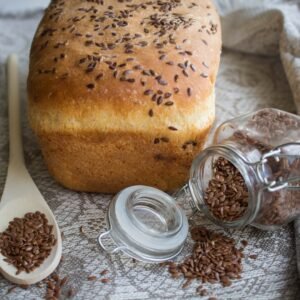
Low carb bread is a type of bread specifically baked to contain fewer carbohydrates than traditional breads, making it suitable for your low carbohydrate or ketogenic diet. These breads typically have a significantly lower net carb count, often around 1 to 10 grams of net carbs per slice, depending on the brand and ingredients used or the recipe you choose to prepare.
Ingredients and Nutritional Profile:
Low carb breads are often made from alternative flours such as almond flour, coconut flour, or psyllium husk, which are higher in fiber and protein compared to conventional wheat flour. Low carb breads with flax seeds or made with ground flax is also popular. This higher fiber content helps in reducing the net carbs because dietary fiber is not digested by the body. For example, a common rule of thumb is that if a bread has 3 grams of total carbohydrates and 2 grams of fiber, it effectively has only 1 gram of net carbs. Personally I prefer psylliym husks rather than ground flax in my low carb bread recipes.
Interestingly, I started to notice that every time I ate a slice of low carb bread with flax I would get dizzy. At first I thought it was a coincidence. But it started to happen regularly. I soon learned that flax can lower your blood pressure. This can be beneficial for many of you who may need to lower your blood pressure. But for me, it was a bit of an issue. I already have low blood pressure. So, I have discovered that I need to refrain from low carb breads with too much flax.
Popular Varieties:
You don’t necessarily have to bake your own low carb bread. Many brands are now available in the supermarket. Some popular brands include:
- Carbonaut Bread: Known for its variety, including white and gluten-free options, with about 1 gram of net carbs per slice.
- Chompie’s Bread: Offers a range of flavors with only 1 gram of net carbs per slice.
- Ezekiel Bread: Made from sprouted grains and legumes, it contains about 15 grams of carbohydrates per slice but is often considered more nutritious due to its whole grain content.
- Cloud Bread: A homemade alternative made primarily from eggs and cream cheese, containing less than half a gram of carbs per slice.
Health Benefits:
Low carb bread can be beneficial for individuals managing blood sugar levels or following a ketogenic diet. It helps in maintaining ketosis—a metabolic state where the body burns fat for fuel instead of carbohydrates. Additionally, these breads can aid in digestive health due to their higher fiber content. Low carb bread provides an alternative if you are looking to enjoy bread while adhering to your low carbohydrate lifestyle. With various options available on the market, you will be able to find products that suit your dietary needs without sacrificing taste or texture.
How Many Carbs Are In Low Carb Bread?

For example, if a loaf of bread contains 100g of total carbohydrates and 20g of fiber, the net carbs would be 80g per loaf. To determine net carbs per slice, simply divide this number by the total number of slices in the loaf.Scientifically, net carbs are considered more relevant for those monitoring blood sugar levels or following low-carb diets because they represent the carbohydrates that are fully digestible and can impact blood glucose.
Fiber passes through the digestive system largely intact and doesn’t significantly affect blood sugar levels.When reading bread labels, it’s crucial to pay attention to serving sizes and variations between brands. Low-carb breads can range from 1g to 15g of net carbs per slice.
For instance, Nature’s Own Keto Soft White Bread contains 10g total carbs and 9g fiber per slice, resulting in just 1g net carbs.It’s also important to consider the sugar content in bread, not just the carbohydrate count. Added sugars can contribute to the overall carb content and may impact blood sugar levels more rapidly than complex carbohydrates. Some low-carb breads may use alternative sweeteners like allulose or monkfruit, which have minimal impact on blood glucose levels.
When evaluating bread options, look for products with higher fiber content and lower total carbohydrates and sugars. For example, some keto-friendly breads are made with almond flour, coconut flour, or psyllium husk, which are naturally low in carbs and high in fiber.
Remember that the impact of carbohydrates can vary between individuals, so it’s essential to monitor your own response to different types of bread and adjust your intake accordingly.
Can I Eat Low Carb Bread On A Keto Diet?
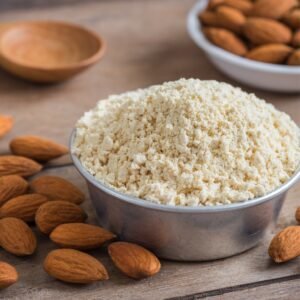
Here are some key points to consider:
Keto-Friendly Bread Options:
Low-carb breads designed for keto diets are typically made with ingredients like:
- Almond flour
- Coconut flour
- Psyllium husk
- Eggs
- Flaxseed meal
- Chia Seeds
These ingredients help keep the net carb count low while providing structure and nutrition.
Carb Content:
The main difference between regular bread and keto bread is the carbohydrate content:
- Regular white bread can have up to 14 grams of net carbs per slice. Wonderbread, for example, has 13 net carbs per slice. Nature’s own Buttermilk bread has 12 net carbs per slice. These breads
- Keto bread typically has less than 2 grams of net carbs per slice.
This significant reduction in carbs allows keto dieters to enjoy bread while staying within their daily carb limits.
Choosing the Right Keto Bread:
When selecting a keto-friendly bread:
- Read nutrition labels carefully
- Look for options with less than 5 grams of net carbs per serving
- Check for high fiber and protein content
- Avoid breads with added sugars or starches
Some popular keto bread brands include:
- Franz Keto Bread
- Base Culture Original Keto Bread
- L’Oven Fresh Zero Net Carb Bread
- Mikey’s Grain-Free Sliced Bread
- SoLo Carb Bread
Considerations:
While keto bread can fit into a ketogenic diet, keep in mind:
- Portion control is still important
- A bread can have low net carbs but still contain sugar that may kick you out of ketosis
- Some keto breads may have a different texture or flavor compared to regular bread
- Availability may be limited compared to regular bread options
By choosing the right low-carb bread and consuming it in moderation, you can enjoy sandwiches and toast while maintaining ketosis on your keto diet.
Does Low Carb Bread Taste Good?

Low-carb bread can vary significantly in taste and texture compared to traditional bread, but many options are available that are considered delicious by consumers.
General Taste and Texture:
Low carb bread is typically made from ingredients like almond flour, coconut flour, and various fibers, which can lead to a different flavor profile and texture than regular bread. While some people find low carb bread to be a satisfying alternative, others note that it may have an “eggy,” “gritty,” or “dry” taste depending on the specific recipe or brand used.
Positive Reviews:
- Sola Burger Buns: These buns have been praised for their light and fluffy texture, closely resembling traditional wheat buns. They toast well and have a pleasant taste, scoring 4.5 stars in reviews.
- Great Low Carb Bread Company: Many consumers report that their products taste similar to regular bread without the unpleasant aftertaste often associated with other low-carb options. Their plain low-carb bread has been highlighted for its soft and chewy texture, making it suitable for sandwiches.
Mixed Reviews:
Some brands do not replicate the flavor of traditional bread effectively. For example, certain low-carb breads may leave an unpleasant aftertaste or feel too different from what one expects from regular bread.
Is Low Carb Bread Gluten-Free?
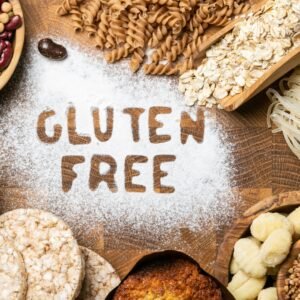
Here are some key points about low carb gluten-free bread options:
Ingredients:
Low carb gluten-free breads typically use alternative flours and ingredients like:
- Almond flour
- Coconut flour
- Psyllium husk
- Flaxseed meal
- Eggs
- Baking powder
- Xanthan gum
These ingredients help create a bread-like texture without wheat flour or gluten.
Nutrition:
Compared to regular bread, low carb gluten-free breads are:
- Higher in protein and fiber
- Often higher in healthy fats from nuts/seeds
Texture and Taste:
While not identical to wheat bread, many recipes aim to replicate:
- A soft, chewy texture
- A neutral flavor (not eggy)
- The ability to toast well
- A crusty exterior with air pockets inside
Brands like Carbonaut offer keto-friendly gluten-free breads that mimic white bread texture.
Homemade vs. Store-Bought:
- Homemade recipes allow for customization of ingredients and flavors
- Store-bought options provide convenience but may have more additives
Storage:
Low carb gluten-free breads often:
- Keep well at room temperature for 3-4 days
- Can be frozen for longer storage
- May become hard faster than regular bread
- Benefit from toasting to improve texture over time
When making or choosing a low carb gluten-free bread, focus on ingredients that provide structure and moisture without excess carbs. Experiment with different recipes or brands to find one that best suits your taste and dietary needs.
How Long Does Low Carb Bread Last?

Here are the general guidelines for how long it lasts:
Countertop Storage:
- 3 to 4 Days: Low carb bread, such as almond flour bread, can be stored at room temperature for about 3 to 4 days when wrapped in parchment paper. Avoid plastic wrap as it traps moisture and can affect the texture.
Refrigeration:
- Up to 1 Week: When stored in the refrigerator, low carb bread can last up to a week. This method helps prevent mold but may lead to the bread becoming stale or hard over time.
Freezing:
- 3 to 6 Months: For longer storage, low carb bread can be frozen for 3 to 6 months. It’s best to slice the bread and store it in a freezer bag with parchment paper between slices to prevent sticking.
Additional Notes:
- Some brands, like ThinSlim Foods, suggest that once opened, their low carb bread can last in the refrigerator for 3 to 4 weeks.
- Homemade keto bread typically lasts about a week and a half in the fridge before starting to become stale.
Can I Toast Low Carb Bread?

Absolutely! You can toast low carb bread, and many varieties are specifically designed for this purpose. Toasting low-carb bread can enhance its flavor and texture, making it a suitable option for various dishes like sandwiches or French toast.
Effects of Toasting Low-Carb Bread:
Toasting low-carb bread does not significantly alter its carbohydrate content. However, it can lower the glycemic index (GI), meaning the carbohydrates may break down more slowly in the body, leading to a more gradual increase in blood sugar levels. This can be beneficial for those following a ketogenic diet, as it may help maintain ketosis better than untoasted bread.
Popular Low-Carb Bread Options:
Several brands offer low-carb bread that toasts well:
- Aldi’s Zero Net Carb Bread: This bread is praised for its texture and taste when toasted, making it a popular choice for keto-friendly meals.
- Lewis Bake Shop Healthy Life Keto Bread: Many users recommend this brand for its excellent toasting quality and flavor.
- Carbonaut Bread: Found in the freezer section, this bread is also noted for its good texture when toasted.
Cooking Suggestions:
You can use low-carb bread for various recipes, including:
- Keto French Toast: Using low-carb bread allows you to enjoy this classic dish while staying within your carb limits.
- Avocado Toast: Toasted low-carb bread serves as a great base for avocado spread, providing a filling and nutritious meal option.
Toasting low-carb bread is not only permissible but can also enhance your meals while adhering to a low-carb diet.
Does Low Carb Bread Cause Bloating?

Low carb bread can potentially cause bloating in some people for a few reasons:
Common Causes of Bloating from Low Carb Bread:
Gluten Content:
Many low carb breads still contain gluten, which can cause bloating in people with gluten sensitivity. Even if you don’t have celiac disease, you may have some level of gluten intolerance that leads to digestive issues.
Fiber and Sugar Alcohols:
Low carb breads often contain added fiber (psyllium or flax) and sugar alcohols to reduce net carbs. These ingredients can be difficult for some people to digest, resulting in gas and bloating. The body may need time to adjust to higher fiber intake.
Food Sensitivities:
Some people may have sensitivities to other ingredients commonly used in low carb breads, like dairy products or certain preservatives. This can trigger bloating and other digestive symptoms.
Tips to Reduce Bloating:
If you experience bloating from low carb bread, here are some suggestions:
- Drink more water to help fiber move through your digestive system
- Introduce fiber gradually to allow your body to adjust
- Try different brands or recipes to find one that works for you
- Consider taking probiotics to support gut health
- Temporarily eliminate low carb bread to see if symptoms improve
Other Considerations:
It’s worth noting that bloating can have many causes beyond just low carb bread. Overall diet changes, food intolerances, and other factors may be contributing. If bloating persists, consult a doctor or registered dietitian to identify the root cause.In some cases, the benefits of low carb bread may outweigh temporary bloating as your body adjusts. However, if symptoms are severe or ongoing, you may need to find alternatives that better suit your digestive system.
Can I Use Low Carb Bread For Sandwiches?
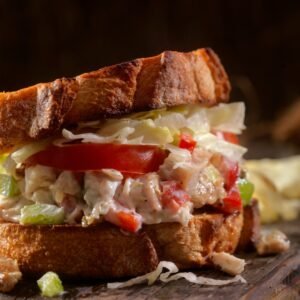
Yes, you can use low carb bread for sandwiches. Many varieties of low carb bread are available, specifically designed for those following a keto or low carb diet. These breads typically have significantly fewer carbohydrates compared to traditional bread, making them suitable for sandwiches while still allowing you to enjoy a similar texture and flavor.
Types of Low Carb Bread:
- Keto Bread: Many recipes use almond flour or coconut flour, resulting in breads that are gluten-free and low in carbs. For instance, some keto breads contain around 2 grams of net carbs per slice and are praised for their light, fluffy texture.
- Commercial Options: Brands like Aldi and other supermarkets now offer low carb bread options that can be used for sandwiches. These often have a higher fiber content that helps reduce the net carbs.
- Homemade Alternatives: You can also make your own low carb bread at home using ingredients like almond flour and psyllium husk, which provide structure similar to traditional bread without the high carb count.
Tips for Using Low Carb Bread:
- Toasting: Toasting low carb bread before adding fillings can enhance its flavor and texture, making it more enjoyable.
- Fillings: Since low carb breads can be denser than regular bread, using spreadable fillings like avocado or cream cheese can improve the overall taste and mouthfeel of your sandwich.
- Variety: You can create a wide range of sandwiches with low carb bread, from classic deli sandwiches to breakfast options like egg sandwiches.
In summary, low carb bread is a viable option for making sandwiches while adhering to a low carb or keto diet.
What Ingredients Are In Low Carb Bread?

Low carb bread can be made using a variety of ingredients, depending on the specific recipe and dietary preferences.
Here are some common ingredients found in popular low carb bread recipes:
Almond Flour Bread:
- Almond Flour: A primary ingredient that provides a low-carb base.
- Psyllium Husk Powder: Adds fiber and helps achieve a bread-like texture.
- Baking Powder: Acts as a leavening agent.
- Sea Salt: Enhances flavor.
- Eggs: Provide structure and moisture.
- Water: Used to hydrate the mixture.
Vital Wheat Gluten Bread:
- Vital Wheat Gluten: A high-protein flour that gives structure to the bread.
- Golden Flax Meal: Adds fiber and a nutty flavor.
- Oat Fiber: Contributes to the texture without adding carbs.
- Inulin: A prebiotic fiber that can help with yeast activation.
- Instant Yeast: For leavening.
- Eggs and Warm Water: For moisture and binding.
Chia Almond Bread:
- Quark or Greek Yogurt: Provides moisture and a soft texture.
- Almond Flour: Serves as the main flour component.
- Chia Seeds: Act as a binder and add nutrients.
- Eggs: Essential for structure.
- Psyllium Husk Powder: Adds fiber and improves texture.
Fathead Dough Bread:
- Almond Flour: The main low-carb flour used.
- Shredded Mozzarella Cheese: Provides elasticity and moisture.
- Cream Cheese: Adds creaminess and helps bind the dough.
- Eggs: For structure and moisture.
- Baking Powder and Optional Sweeteners (like erythritol): For flavor and leavening.
These ingredients can be mixed and matched based on dietary needs, such as gluten-free or dairy-free options, while still maintaining a low carbohydrate count suitable for keto diets. Each recipe may yield different textures and flavors, allowing for variety in low carb bread options.
How Do I Store Low Carb Bread?
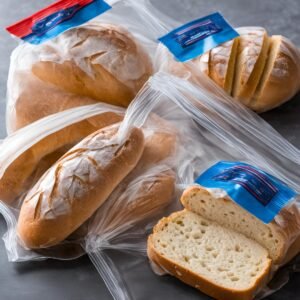
To store low-carb bread effectively, consider the following methods based on various recipes and expert recommendations:
Countertop Storage:
- Wrap in Parchment Paper: After the bread has cooled completely, wrap it in parchment paper rather than plastic. This helps maintain its texture and prevents moisture buildup, which can lead to sogginess.
- Duration: Low-carb bread can be stored at room temperature for about 3 to 4 days. If you notice it becoming hard, you can toast it to restore some texture.
Refrigeration:
- Airtight Container: For longer shelf life, place the wrapped bread in an airtight container and store it in the refrigerator. This method can extend its freshness up to 1 week.
Freezing:
- Slice Before Freezing: If you plan to keep the bread for an extended period, slice it first. Place the slices on a parchment-lined baking sheet in a single layer until frozen solid, then transfer them to a freezer bag with parchment paper between slices to prevent sticking.
- Freezer Duration: Low-carb bread can be frozen for 3 to 6 months. When ready to eat, you can toast slices directly from the freezer.
Additional Tips
- Avoid using plastic wrap or bags for storage as they trap moisture and can alter the texture of the bread negatively.
- If the bread becomes slightly damp or gummy over time, toasting can help restore its original texture.
Is Low Carb Bread Suitable For Type 2 Diabetics?

Low carb bread can be a suitable option for many people with diabetes. It’s effects can vary between individuals.
Here are some key points to consider:
Benefits of Low Carb Bread for Diabetes:
- Lower carbohydrate content compared to regular bread, which can help manage blood sugar levels
- Often higher in fiber, which can slow glucose absorption and promote better blood sugar control
- May contain ingredients like nuts or seeds that provide healthy fats and protein
Choosing Low Carb Bread:
When selecting low carb bread, look for options that:
- Are made with 100% whole grains
- Contain at least 3 grams of fiber per serving
- Have minimal added sugars (1-3 grams per slice)
- List whole grain flour as the first ingredient
Some recommended brands include:
- Dave’s Killer Bread Organic 21 Whole Grains and Seeds
- Ezekiel 4:9 Sprouted Whole Grain Bread
- Julian Bakery Keto Thin Bread
Important Considerations:
- Individual responses can vary – what works for one person may not work for another
- “Net carbs” calculations may not be reliable for all diabetics
- Some low carb breads may contain additives or sugar alcohols that can affect blood sugar
- Portion control is still important, even with low carb options
Monitoring Blood Sugar:
The best approach is to test your blood sugar before and 1-2 hours after eating low carb bread to see how it affects you personally. This will help you determine if a particular brand or type of low carb bread is suitable for your diabetes management plan.Remember to consult with your healthcare provider or a registered dietitian for personalized advice on incorporating low carb bread into your diet.
Can I Make Low Carb Bread Without Eggs?
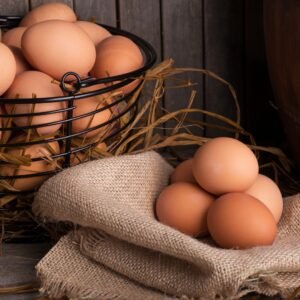
Here are some popular options:
1. Vegan Keto Bread with Psyllium Husk:
This recipe creates a fluffy and soft bread using almond flour and coconut flour, along with psyllium husk to provide structure and fluffiness. The ingredients include:
- 2 ½ cups Almond Flour
- ½ cup Coconut Flour
- ⅓ cup Flaxseed Meal
- ⅓ cup + 2 tbsp Whole Psyllium Husk
- 1 tablespoon Baking Powder
- ½ – 3 teaspoons Salt
- 2 tablespoons Olive Oil
- 2 cups Lukewarm Water
To prepare, mix the dry ingredients, then add the wet ingredients and knead briefly. Shape the dough into a loaf and bake at 400°F (200°C) for about 60-70 minutes until cooked through.
2. Coconut Flour Bread
This recipe is quick and easy, taking only about 20 minutes to prepare. It uses:
- 4.3 oz Coconut Flour (about 1 cup)
- 2.1 oz Almond Flour (about ½ cup)
- 0.95 oz Whole Psyllium Husk (about ⅓ cup)
- 0.91 oz Chia Seeds (about 2 tablespoons)
- 2 teaspoons Baking Powder
- ½ teaspoon Salt
- 2 ¼ cups Lukewarm Water
- 2 teaspoons Apple Cider Vinegar
Combine all the dry ingredients, then mix in the wet ingredients until a dough forms. Bake in a preheated oven at 375°F (190°C) for about 25 minutes.
3. Quick 90 Second Bread
For those looking for an ultra-fast option, this microwave recipe uses:
- 2 tablespoons Ground Sunflower Seeds
- 3 tablespoons Whey Protein Isolate
- 4 tablespoons Ground Flax Seeds
- ½ teaspoon Baking Powder
- Salt to taste
- 7 tablespoons Water
Mix the dry ingredients in a small bowl, then combine with water to form a batter. Microwave for about 90 seconds for a quick bread fix.
Key Ingredients and Techniques
The key to these egg-free recipes is the use of high-fiber ingredients like psyllium husk and flax seeds, which mimic the binding properties of eggs while keeping the carb count low. These recipes not only cater to those avoiding eggs but also provide delicious alternatives that can be enjoyed as sandwiches or toasted with various toppings.
What Is The Texture Of Low Carb Bread Like?

Low-carb bread has a variety of textures depending on the specific recipe and ingredients used. Here are some common characteristics based on recent recipes and user experiences:
Texture Characteristics:
- Similar to Wheat Bread: Many low-carb breads, particularly those made with almond flour or chia seeds, have a texture that closely resembles whole-wheat bread. They are often described as soft with a tender crust, making them suitable for everyday use like sandwiches or toast.
- Dense and Hearty: Some low-carb breads can be denser compared to traditional bread due to the absence of gluten and the use of alternative flours such as almond or coconut flour. This density can make them feel heavier and sometimes less airy than conventional bread.
- Moist and Chewy: Recipes that incorporate ingredients like quark or yogurt tend to produce a moister texture, enhancing the chewiness that many people enjoy in bread. This moisture helps prevent the bread from becoming too dry or crumbly, which is a common issue with some low-carb varieties.
- Crusty Exterior: Certain recipes emphasize achieving a crusty exterior while maintaining a soft interior. This combination is often sought after for its ability to mimic traditional baked breads more closely.
- Absorption of Liquids: Low-carb breads can absorb liquids quickly, which may affect their texture when used in dishes like French toast or sandwiches. Some users report that they can feel spongy if not toasted or prepared properly.
User Experiences:
- Many users have expressed satisfaction with low-carb breads that taste and feel similar to regular bread, particularly those made with almond flour or specific techniques to enhance texture.
- However, some individuals find that many commercial low-carb breads can have an undesirable texture, often described as “squishy” or “sponge-like,” particularly when not toasted.
Are There Any Low Carb Bread Recipes For Bread Machines?
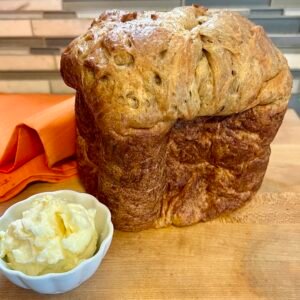
Here are several low-carb bread recipes suitable for bread machines, each offering a unique flavor and texture while keeping carbohydrate content low.
1. Low Carb Bread Machine Bread:
- Based on 14 slices per loaf: 4 net carbs per slice
- Ingredients:
- 1 cup warm water
- 1 ½ tbsp sugar
- 1 ½ tsp bread machine yeast
- 3 cups Carbalose flour
- 3 tsp vital wheat gluten
- ¼ cup vegetable oil
- Instructions:
- Lightly spray the bread pan to prevent sticking.
- Activate the yeast by mixing warm water, sugar, and yeast in the pan; let it sit for about 8-10 minutes until bubbly.
- Add the remaining ingredients and set the machine to basic mode.
- Bake and enjoy your low-carb bread.
2. Keto Friendly Yeast Bread
- Based on 14 slices per loaf: 2.14g of net carbs per slice
- Ingredients:
- 1 package dry yeast (rapid rise)
- ½ tsp sugar
- 1 ⅛ cup warm water (120-130°F)
- 3 tbsp olive oil
- 1 cup vital wheat gluten flour
- ¼ cup oat flour
- ¾ cup soy flour
- ¼ cup flax meal
- ¼ cup coarse unprocessed wheat bran
- 1 tbsp granular sweetener
- 1½ tsp baking powder
- 1 tsp salt
- Instructions:
- Proof the yeast by mixing it with sugar and warm water in the bread machine pan.
- Combine all dry ingredients in a bowl, then pour over the wet ingredients in the pan.
- Set the machine to a large loaf with medium baking control and let it run through its cycle.
3. Deidre’s Low Carb Bread Recipe
- Based on 14 slices per loaf: 2g net carbs per slice
- Ingredients:
- 1 cup warm water (90-100°F)
- 1 tbsp active yeast
- 1 tsp sugar (liquid)
- 2 eggs (slightly beaten)
- ⅔ cup ground golden flax meal
- ½ cup oat fiber
- 1¼ cup vital wheat gluten
- Optional: sweetener of choice (e.g., powdered allulose)
- Optional: psyllium husk powder, pink salt, softened butter
- Instructions:
Add ingredients to the bread machine in the specified order, allowing the yeast to foam before adding other components. Set to mix and bake for about three hours.
Additional Options:
- Hard Crust Low Carb Bread: This recipe features a hard crust and only about 1g net carbs per slice. It includes ingredients like chia flour, gluten flour, and optional fillings like feta cheese or olives.
- Flaxseed Bread: A gluten-free option made with flaxseed, psyllium husk, and almond flour, providing a nutritious alternative without eggs or gluten.
- Urban Cowgirl’s Low Carb Bread: This recipe combines oat fiber, flaxseed meal, and vital wheat gluten for a moist bread with just 3g net carbs per slice, ideal for toast or sandwiches.
These recipes allow for flexibility in ingredients based on dietary preferences while ensuring a delicious low-carb bread option from your bread machine.
How Does Low Carb Bread Affect Weight Loss?

Low-carb bread can have mixed effects on weight loss efforts.
Here are some key points to consider:
Impact on Carb Intake:
Low-carb breads typically contain fewer net carbs compared to regular bread. This allows people following low-carb or keto diets to occasionally include bread-like products while staying within their carb limits. However, the actual carb content can vary significantly between brands.
Potential Benefits:
- May help satisfy cravings for bread products while on a low-carb diet
- Often higher in protein and fiber compared to regular bread
- Can make low-carb diets feel more sustainable for some people
Potential Drawbacks:
- May stall weight loss for some individuals
- Often highly processed with questionable ingredients
- Can lead to overconsumption due to the perception of being “low-carb”
- May kick some people out of ketosis despite being labeled as keto-friendly
Considerations for Weight Loss:
- Individual responses vary – some people can include low-carb bread without issue while others experience stalls
- Quality and ingredients matter – look for options with minimal processing and healthy ingredients
- Portion control is still important, even with low-carb versions
- Whole, unprocessed foods are generally preferable for sustainable weight loss
Alternatives to Consider:
Instead of relying on processed low-carb breads, some healthier alternatives include:
- Ezekiel bread made from sprouted whole grains
- Cloud bread made from eggs and cream cheese
- Eggplant or portobello mushroom “buns”
- Lettuce wraps
While low-carb bread can fit into some weight loss plans, it’s not a magic solution. Focus on an overall nutritious diet and be mindful of how your body responds to different foods. If you notice weight loss stalling when including low-carb bread, you may want to reduce or eliminate it from your diet.
What Are Other Low Carb Bread Blogs You May Be Interested In Reading?
LOW CARB BREAD’S SECRET WEAPON WITH SOURDOUGH FERMENTATION
SOURDOUGH LOW CARB BREAD AS A HOLIDAY GIFT OPTION
10 LITTLE KNOWN FACTS ABOUT SOURDOUGH LOW CARB BREAD
SOURDOUGH LOW CARB BREAD AS BODYBUILDING SECRET WEAPON
10 SOURDOUGH LOW CARB BREADS PAIRED WITH NON ALCOHOLIC WINES
SOURDOUGH LOW CARB BREAD & HOW BIFIDOBACTERIA BOOST YOUR HEALTH
SOURDOUGH LOW CARB BREAD AS A PROBIOTIC POWERHOUSE
FYI: SOURDOUGH MEDICAL STUDIES AND REVIEWS:
Here they are:
- Does Sourdough Bread Provide Clinically Relevant Health Benefits?: Link: https://pmc.ncbi.nlm.nih.gov/articles/PMC10399781/
- The Sourdough Microbiome : Link: https://asm.org/articles/2020/june/the-sourdough-microbiome
- Sourdough Microbiome Comparison and Benefits: Link: https://pmc.ncbi.nlm.nih.gov/articles/PMC8306212/
- Nutritional Benefits of Sourdough; Systematic Review : Link: https://pubmed.ncbi.nlm.nih.gov/36811591/
- Use of sourdough in low FODMAP baking : Link: https://pubmed.ncbi.nlm.nih.gov/29932101/
Disclaimer:
All information provided on this website regarding the health benefits of sourdough low carb bread is intended for educational purposes only. The content presented is not meant to be taken as specific medical advice for any individual. It should not be considered a replacement for professional medical guidance or treatment. If you have any health concerns, especially related to diabetes, pre-diabetes, or any other medical condition, please consult with a healthcare professional immediately.
🔥 UNLOCK MORE RECIPES STARTER + MEMBERSHIP – Only $99 CAD! 🔥
Get a second starter with your membership – the exclusive membership recipes use 2 different low-carb feedings to bake the 3 different styles of breads and baked goods (weight loss, low-carb lifestyle maintenance, fast and easy discard recipes) that will transform your baking game beyond what your current starter can achieve!
💰 PRICING: Regular Price: $198 CAD Today Only: $99 CAD (Only $99 CAD!)
SINLESSSOURDOUGH.COM
Click the Starter + Membership Box
Your Discounted Membership Includes:
🥖 1849 San Francisco Gold Rush Dehydrated Starter: Scientifically validated starter shipped free to your door!
📦 FREE Shipping: Your starter ships to you at no extra cost
🎥 25+ Instructional Video Trainings: Master Keto & Low-Carb Sourdough Baking with comprehensive video lessons
📚 3 E-Sinless Sourdough Cookbooks: Easy-to-follow sourdough recipes for your low-carb lifestyle
📖 3 E-Keto Low-Carb Cookbooks: Delicious low-carb recipes to complement your baking
🗓️ E-28-Day Keto Kickstarter Journal & Planner: Stay on track with your low-carb journey
📝 Keto Low-Carb E-Cheat Sheets & Quick Guides: Shortcuts for perfect baking every time
🍞 Training for 3 Styles of Keto & Low-Carb Sourdough: Learn recipes for weight loss, lifestyle maintenance, and easy discard recipes
💬 Exclusive Community Access: Share tips, ask questions, and get expert support from fellow bakers
🚀 DON’T MISS OUT – GRAB IT FOR Only $99 CAD NOW! 🚀
Transform Your Baking Today:
- Visit sinlesssourdough.com™
- Click “Starter + Membership”
- Proceed to the purchase page
- Enter code: SINLESS50
- Complete checkout and START BAKING guilt-free sourdough immediately!
SINLESSSOURDOUGH.COM
Click the Starter + Membership Box
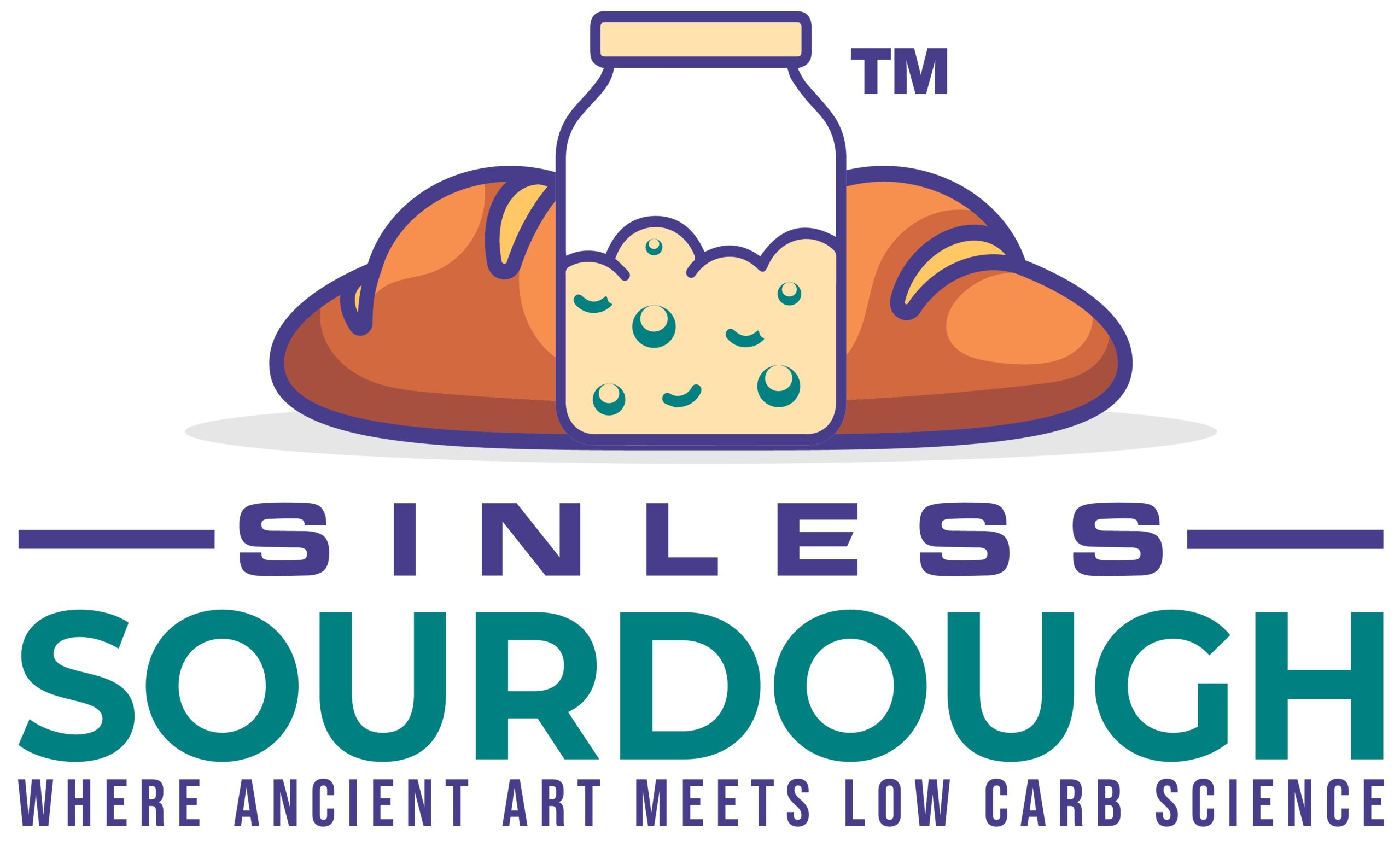


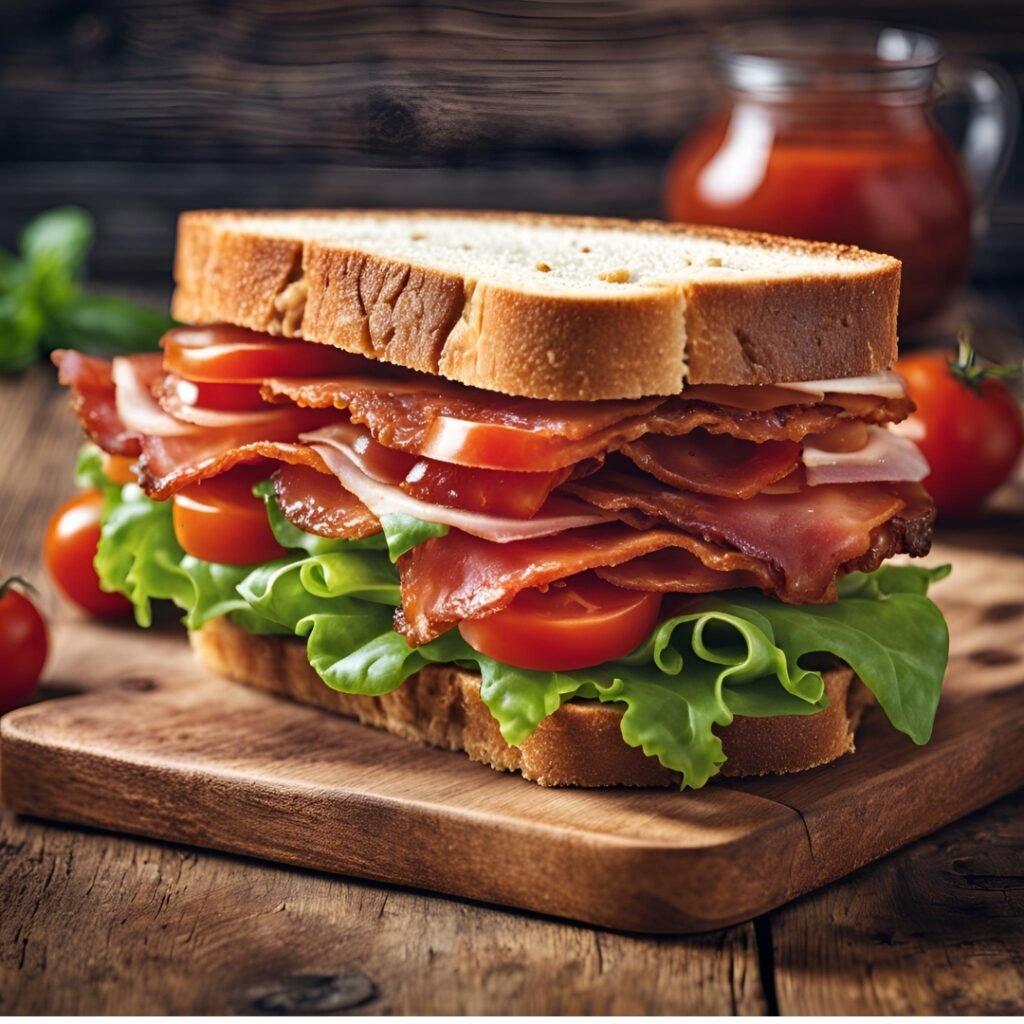
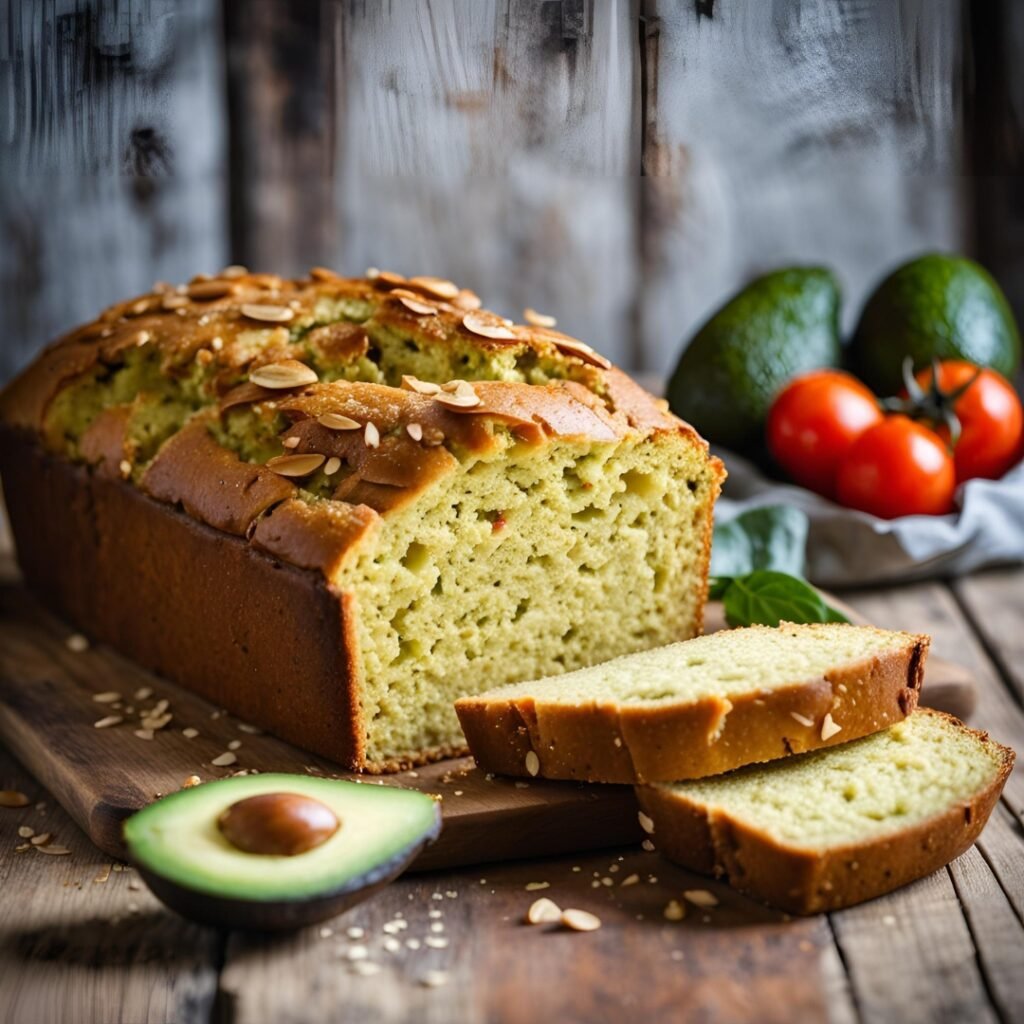
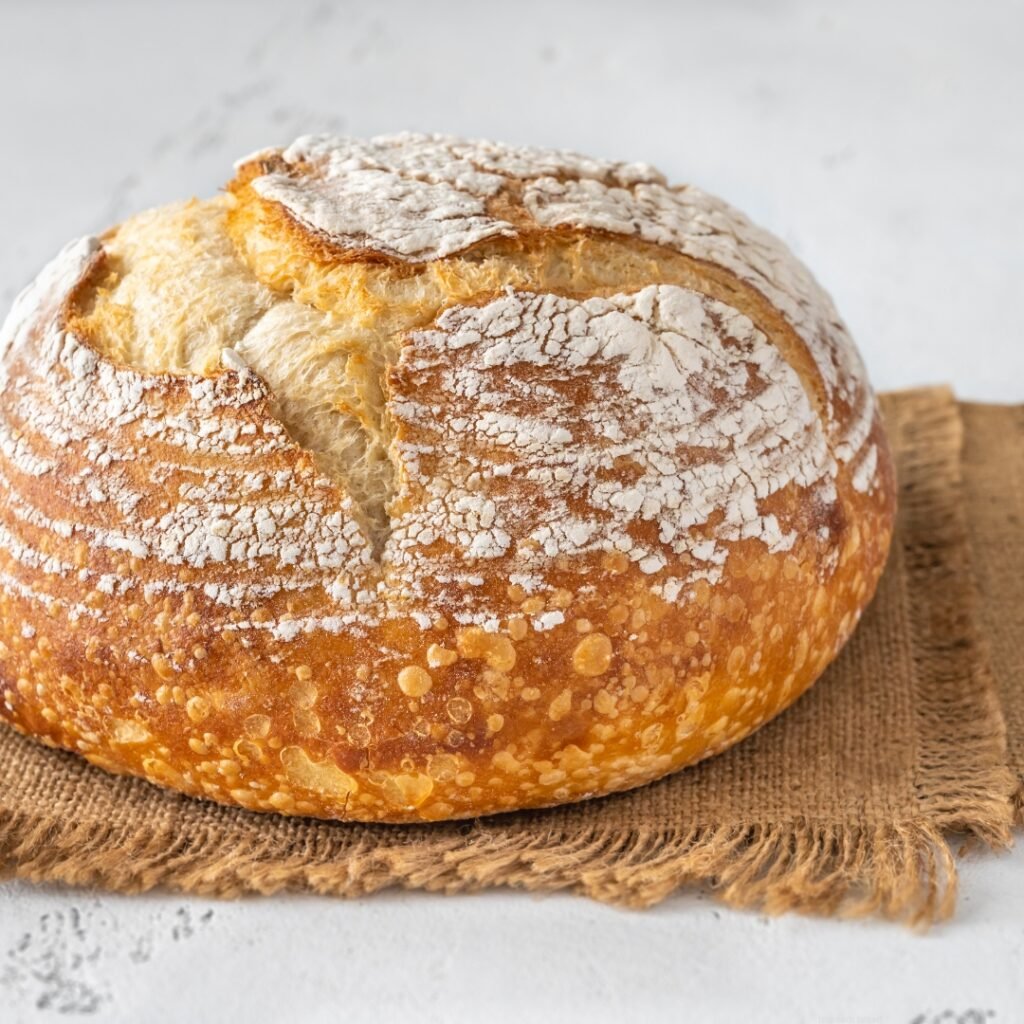
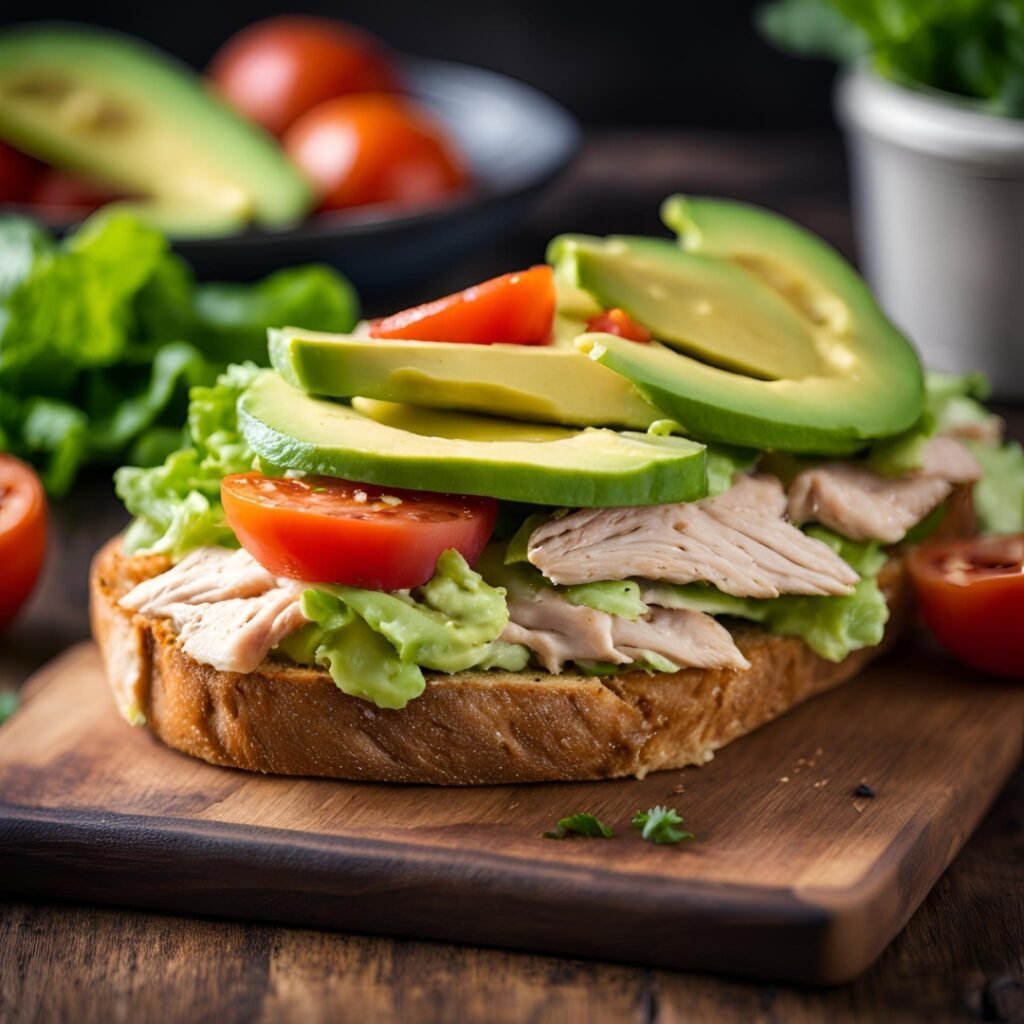
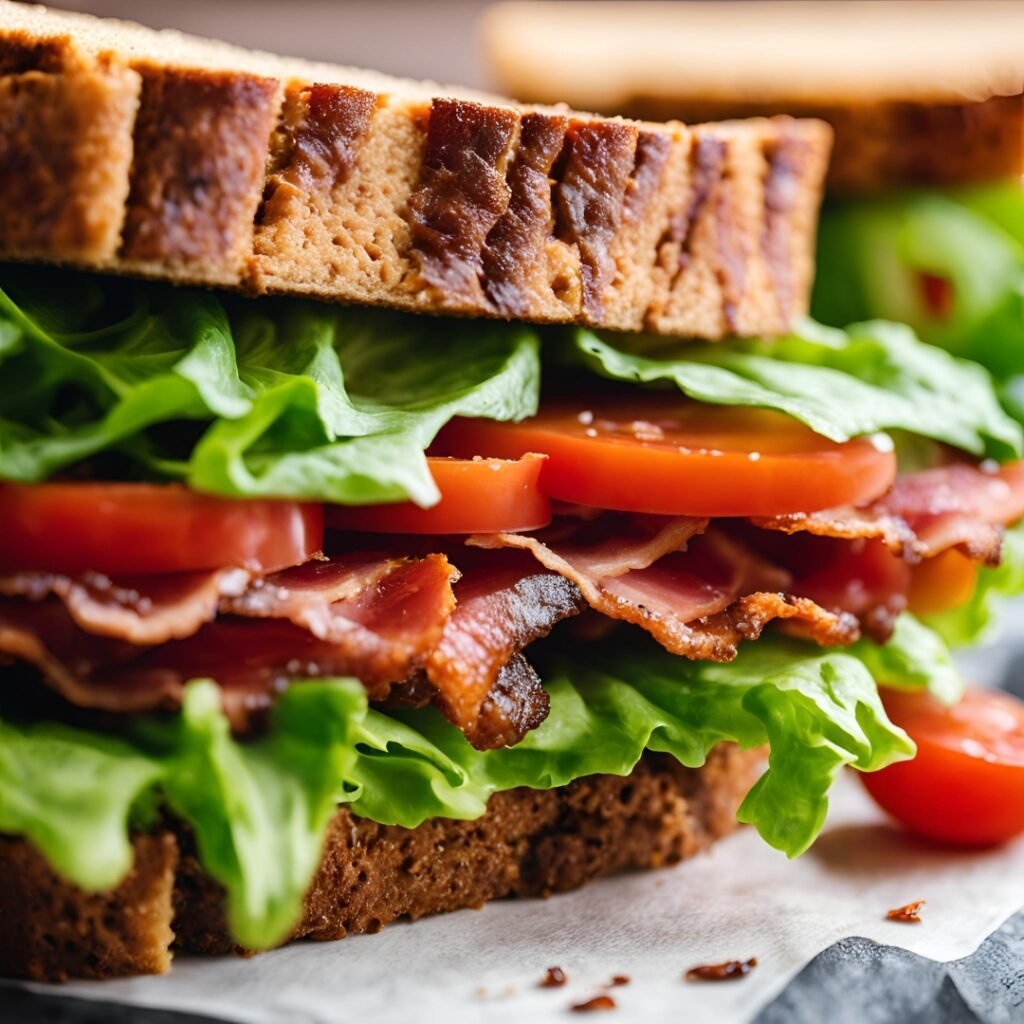
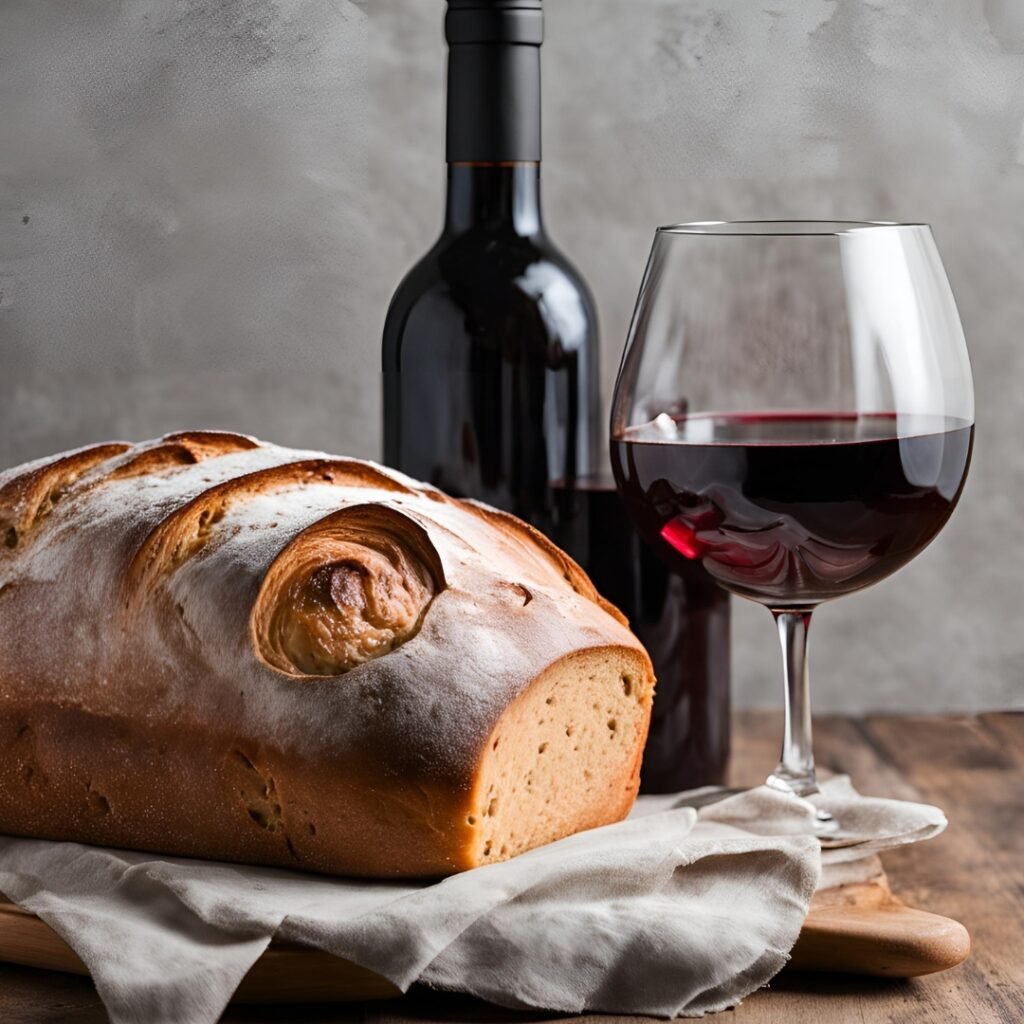
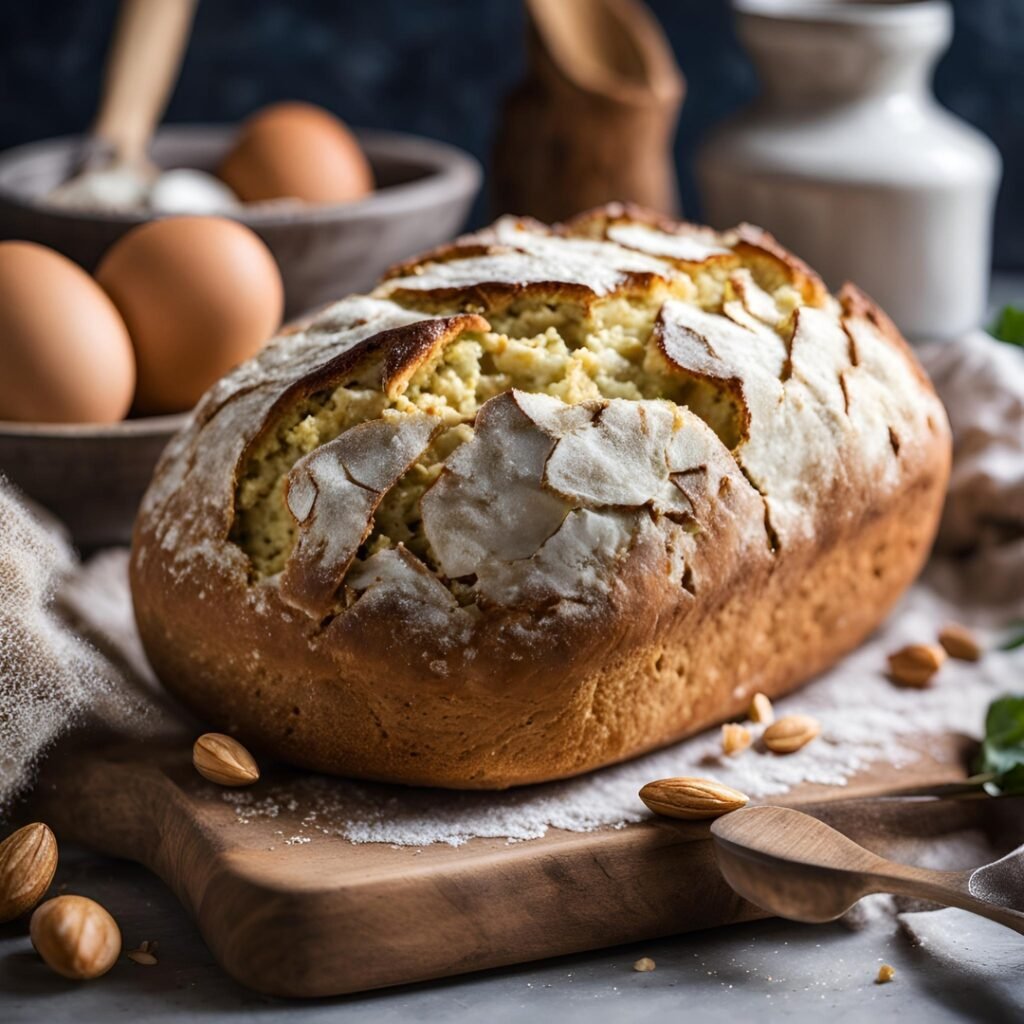

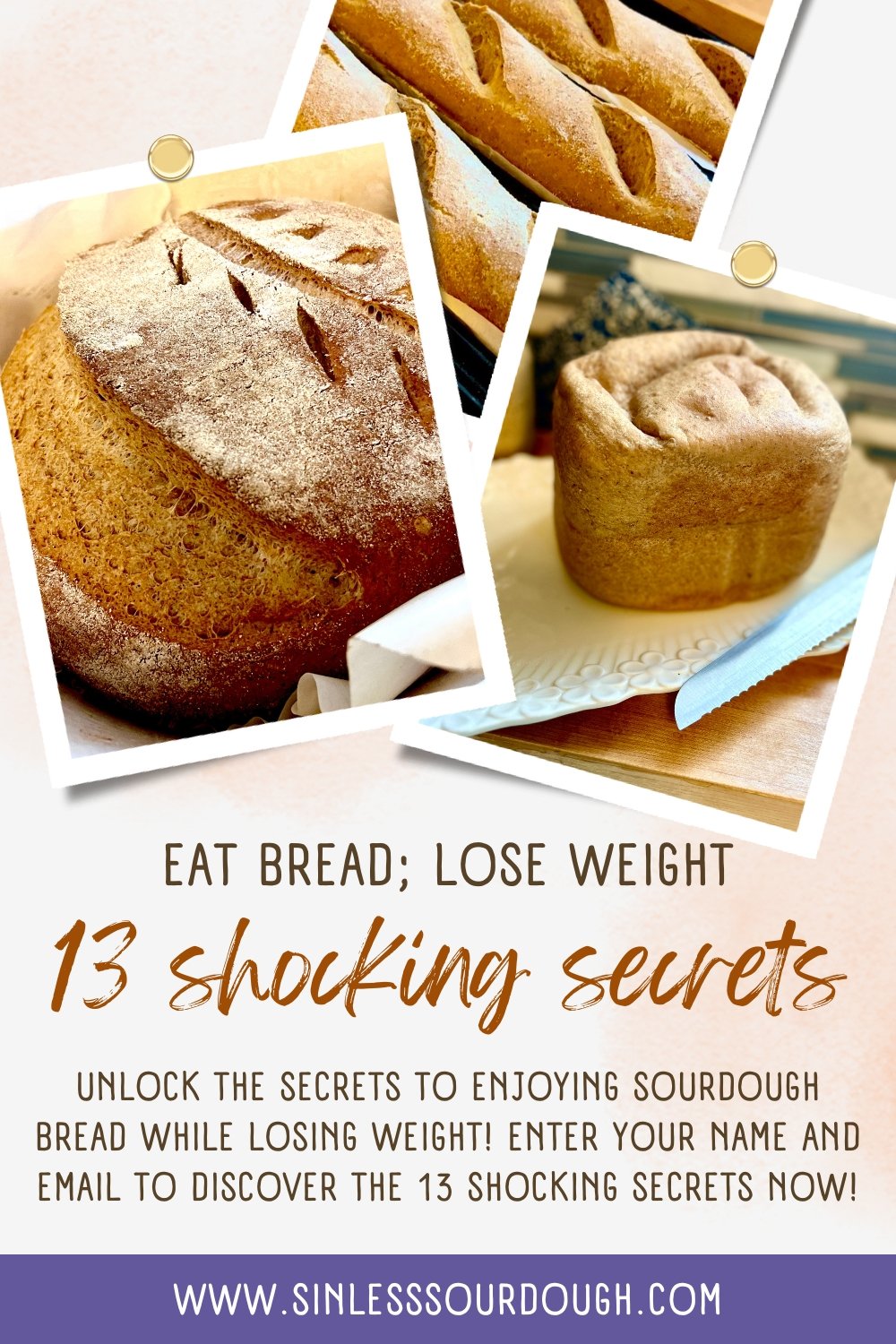
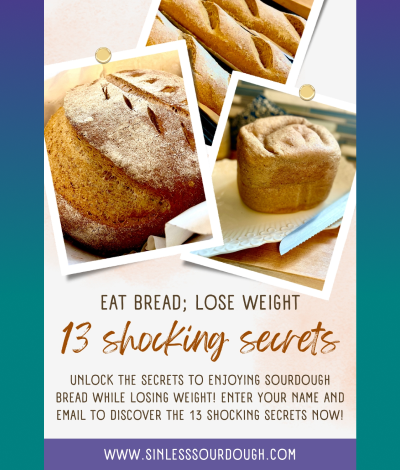
Responses